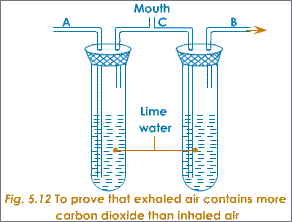URBAN ENVIRONMENTS (THE SUSTAINABLE CITY: One socially sustainable housing management strategy)
Camden’s new energy-efficient homes that won’t break the bank
Camden council is using top architects to create 1,200 new, energy-efficient homes for sale at affordable prices.
From £300,000: Chester Balmore, near Highgate, is a collection of 53 council and private tenure energy-efficient homes. Visit chesterbalmore.com
Camden’s architecture department, in an all-too-brief period of glory between 1965 and 1973, built social housing so pioneering it drew admirers from around the world.
Inspired by the modernist master Le Corbusier, the borough triumphed with high-quality council housing on a series of low-rise concrete estates, including Bloomsbury’s Brunswick Centre and Rowley Way. Loved as film locations, you can spot these estates in The Sweeney and Prime Suspect, and in the movie Breaking and Entering. Now, these same homes appear in Brutal and Beautiful, an exhibition celebrating the best of postwar architecture showing at Wellington Arch near Hyde Park.
Today, Camden is back building showpiece housing schemes that mix public and private tenure, with about 1,200 new homes in the pipeline.
Chester Balmore is the first of these new developments, built to energy-efficient “Passivhaus” standards in Highgate, bordering the cemetery and a Victorian library. Designed by Rick Mather Architects, more often associated with high-profile international projects, there are 53 super-insulated, triple-glazed one- to three-bedroom flats in elegant brick-clad blocks amid the surroundings of the Dartmouth Park conservation area.
All the homes have identical specifications. They are dual aspect, have outside space, and some are spread over two floors with a front door on to communal gardens or tree-lined street.
Lower energy bills
Combining form and function, the white-walled interiors have full-height doors, sensor lights and timber flooring throughout, while a ventilation heat recovery and air-filtration system avoids the need for wall-hugging radiators. Passivhaus design reduces energy costs by up to 75 per cent. Prices start at £300,000.
Twenty six of the flats are for private sale while four are shared-ownership for those earning £35,000 to £39,000 and living or working in the borough. It is a car-free scheme, meaning no on-site parking and residents do not qualify for street permits. Call 020 3320 8220.
This is the first time the council has built new housing for private sale, with the proceeds invested back into the neighbourhoods in the form of new low-cost housing, public realm improvements, open spaces and new shops and community facilities.
Camden: more affordable homes on the way
Over the years, many of Camden’s best council houses have been snapped up under the Right to Buy. But affordable resales appear on the market. A one-bedroom flat at the architecturally prized Whittington Estate sold for £295,500 this year. Gavin Miller, project architect of neighbouring Chester Balmore, lives at the Whittington.
Other mixed-tenure Camden projects coming up include Maiden Lane at King’s Cross,Bourne Estate in Clerkenwell, Tybalds Estate in Holborn, Abbey Road, just north of St John’s Wood, Bacton Estate at Gospel Oak and Agar Grove, Camden Town.
New affordable homes are also being created as part of the redevelopment of Centre Point, the iconic Sixties West End office tower.
With an average house price of £806,414, Camden is the third most expensive London borough, but housing associations are offering far cheaper homes. Forty per cent of properties at King’s Cross Central, a new district being built on redeveloped railway land behind the station, are classified affordable, for rent and shared ownership. These are available through One Housing Group, which is releasing apartment blocks in phases. Call 0300 123 9966.
Origin Housing is also worth contacting. It owns and manages properties at developments such as Regent’s Place, a 13-acre office, retail and residential quarter alongside Euston station. Call 0800 068 8990.




















